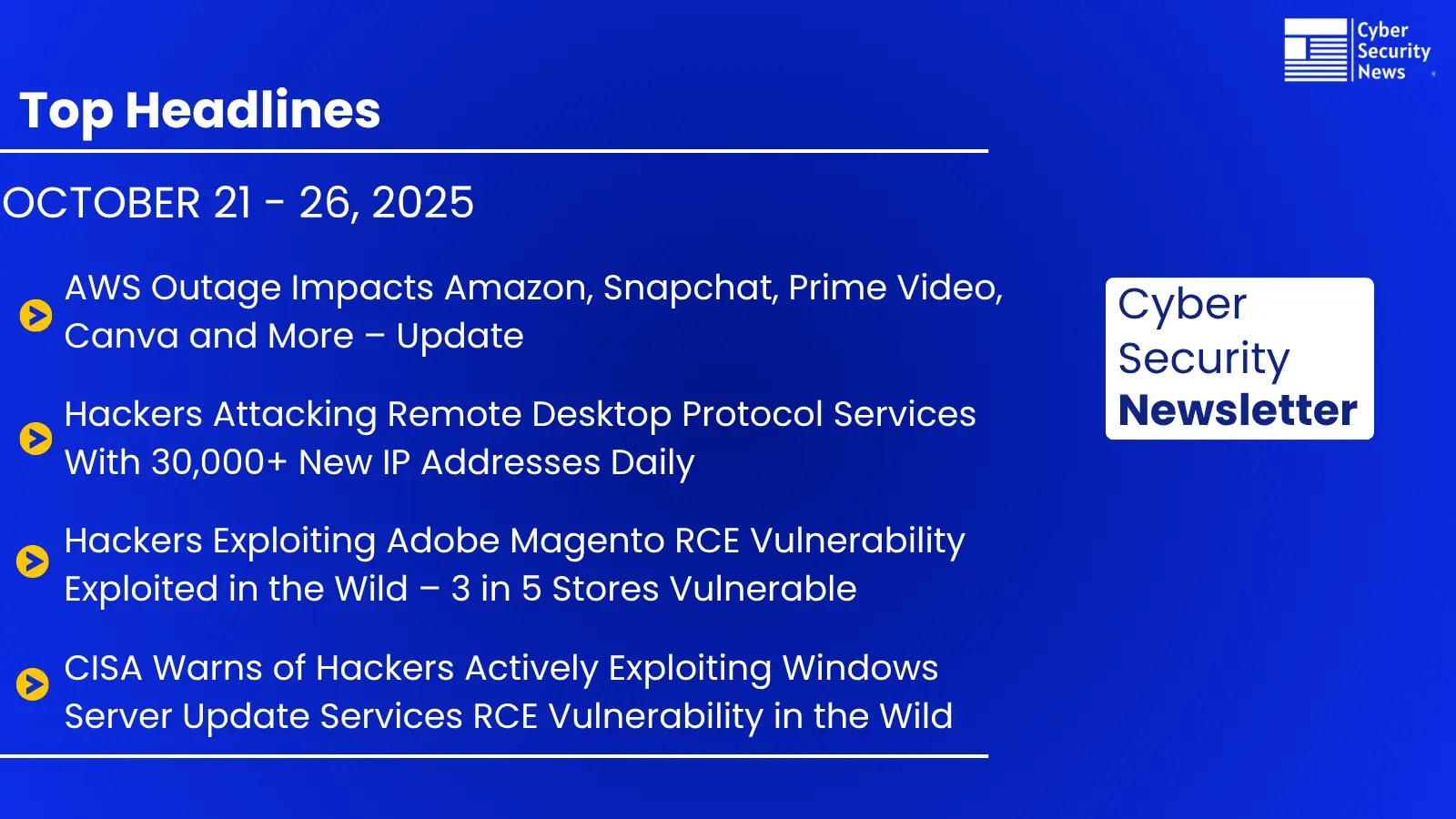
Cybersecurity News Weekly Newsletter – EY Data Leak, Bind 9, Chrome Vulnerability, and Aardvar ChatGPT Agent
Navigating the Week’s Cybersecurity Landscape: Critical Alerts and Proactive Measures
The digital defense perimeter is under constant siege, and this week’s cybersecurity roundup underscores the persistent threats stemming from misconfigurations, critical software flaws, and increasingly sophisticated advanced malware. For IT teams and executives, staying ahead means immediate attention to emerging vulnerabilities and swift implementation of protective measures. This update delves into crucial incidents involving a significant EY data leak, a critical BIND 9 vulnerability, a pressing Chrome flaw, and the ongoing evolution of AI-driven threats.
BIND 9 DoS Vulnerability: Urgent Patch Required (CVE-2025-5470)
Internet Systems Consortium (ISC) has issued an urgent patch for a high-severity denial-of-service (DoS) vulnerability, identified as CVE-2025-5470, affecting BIND 9 versions 9.16.0 through 9.18.26. This flaw carries a CVSS score of 8.6, indicating a significant risk.
The vulnerability allows an attacker to crash a BIND 9 DNS server by sending a maliciously crafted or malformed DNS query. The ramifications extend beyond localized service disruption; such a vulnerability risks being exploited for amplification attacks that could severely impact global DNS infrastructure. Given BIND’s pervasive use in critical internet services, immediate remediation is non-negotiable.
Remediation Actions for BIND 9 (CVE-2025-5470)
- Immediate Update: DNS server administrators must update their BIND 9 installations to the patched versions provided by ISC as soon as possible.
- Monitor DNS Traffic: Implement robust DNS traffic monitoring to detect unusual query patterns or sudden server resource spikes that could indicate an attempted exploitation.
- Implement Rate Limiting: Configure rate limiting on DNS resolvers to mitigate the impact of potential DoS attacks.
- Out-of-Band Patching: Prioritize patching BIND 9 instances over routine maintenance schedules due to the critical nature of this vulnerability.
Relevant Tools for BIND 9 Vulnerability Management
| Tool Name | Purpose | Link |
|---|---|---|
| DNS BIND | Official BIND software distribution and updates | https://www.isc.org/bind/ |
| Wireshark | Network protocol analyzer for monitoring DNS traffic anomalies | https://www.wireshark.org/ |
| Nagios Core | Network and server monitoring for BIND service availability | https://www.nagios.org/projects/nagios-core/ |
| Snort/Suricata | Intrusion Detection/Prevention Systems for detecting malicious DNS queries | https://www.snort.org/ / https://suricata-ids.org/ |
EY Data Leak: A Wake-Up Call for Supply Chain Security
While specific details are still emerging, the reported data leak involving EY serves as a stark reminder of the widespread implications of supply chain vulnerabilities. Often, organizations are not directly breached but suffer data exposure due to a compromise within a third-party vendor or partner in their supply chain.
Such incidents highlight the critical need for comprehensive vendor risk management programs, rigorous third-party security assessments, and clear contractual obligations regarding data protection. Organizations must understand their attack surface extends far beyond their corporate network.
Chrome Vulnerability: Browser Security Remains Paramount
(Note: The provided source content for Chrome Vulnerability is truncated. Assuming a standard browser vulnerability scenario, the following analysis and remediation would apply).
Web browsers, particularly widely used ones like Google Chrome, are frequent targets for adversaries due to their direct access to sensitive user data and their role as a primary interface to the internet. A typical Chrome vulnerability could range from remote code execution (RCE) flaws to cross-site scripting (XSS) or use-after-free bugs, allowing attackers to compromise user systems or harvest credentials.
Remediation Actions for Chrome Vulnerabilities
- Keep Chrome Updated: Rely on Chrome’s auto-update feature or manually ensure all installations are running the latest version. Browser updates frequently include critical security patches.
- Implement Browser Security Policies: For enterprise environments, enforce security policies via Group Policy Objects (GPO) or management tools to control extensions, disable risky features, and manage updates centrally.
- Use Endpoint Protection: Deploy robust endpoint detection and response (EDR) solutions to protect against browser-based exploits.
- User Education: Train users to recognize phishing attempts and avoid clicking suspicious links, as these often serve as initial access vectors for browser exploitation.
Aardvark ChatGPT Agent: The Evolving Threat of AI-Driven Malware
The emergence of tools like Aardvark, a ChatGPT-powered agent, signals a new frontier in cybercrime. These advanced agents leverage large language models (LLMs) to automate and enhance various stages of an attack, from reconnaissance and social engineering to potentially even code generation for malicious payloads.
This development necessitates a paradigm shift in defense strategies. Traditional signature-based detection methods may struggle against dynamically generated, AI-assisted threats. Focus must shift to behavioral analysis, anomaly detection, and fostering AI-aware security teams.
Mitigating AI-Driven Threats
- Behavioral Analytics: Invest in security tools that can identify anomalous behavior patterns on networks and endpoints, rather than relying solely on known signatures.
- AI-Powered Security: Leverage AI and machine learning within your security stack to detect and respond to sophisticated, evolving threats.
- Threat Intelligence: Stay informed about the latest developments in AI-driven attack techniques and tools.
- Employee Training: Enhance training to recognize sophisticated AI-generated phishing and social engineering attempts.
Conclusion: Proactive Posture in a Dynamic Threat Landscape
This week’s cybersecurity news underscores a critical message: remaining secure requires continuous vigilance and proactive adaptation. From urgent BIND 9 patches to the enduring risks of supply chain compromises and the burgeoning threat of AI-driven attacks, the landscape is complex.
Organizations must prioritize rapid patching, robust vendor security assessments, layered defense strategies, and ongoing education to fortify their defenses against an ever-evolving array of cyber threats.





